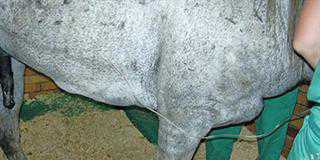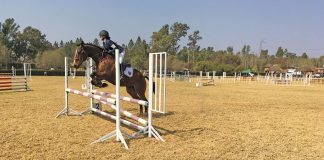Lameness is probably the most common cause of concern amongst horse owners. There are many and varied reasons for a horse pulling up lame.
Sesamoiditis or inflammation of the sesamoid bones usually involves an inflammation of the bone membrane (periosteum) and the bone itself. The suspensary ligament and the distal sesamoid ligaments are also affected and may show calcification.
The sesamoid bones are found at the back of the fetlock, near the ergot. They act as little pulleys for the suspensory ligament here are two common types of sesamoiditis, namely articular or non-articular. The articular form has small bony growths at the point and base of the sesamoid bone, and is usually a secondary disease within the fetlock cavity. non-articular form is usually seen with a disease that originated with the suspensory apparatus and is characterised by a coarseness of the bone and bony developments at the base of the sesamoid bone.
A ny unusual strain or sprain to the fetlock region could produce sesamoiditis. It is caused by a trauma or injury to the attachment of the ligament to the sesamoid bones. This injury may prevent a strong blood supply to the sesamoid bones.
In the early stages there is usually very little swelling, but there is heat over the sesamoid bones. As the condition progresses there is a noticeable soft tissue enlargement at the back of the fetlock (see picture). Diagnosis is made by x-ray.
It is very important to reduce heat and swelling. Anti-inflammatory herbs such as dandelion, devil’s claw or willow sweet will help. Make a tea from the herbs and place into feed twice a day.
Other treatments include: • Apis Mel 6C, 1ml every hour for one day. Then 1ml six times a day. This will bring down the swelling in the joint. • Rhux Toxicodendron 30c, 1ml every hour for one day. 1ml six times a day.
When you start to bring your horse back into work, this will work wonders. • Feed 300ml of apple cider vinegar daily for one month, then 100ml a day. • Chilli oil can be rubbed into painful joints. • Feed your horse 60g Msm every morning.
Once a diagnosis has been made your horse will need to be rested for a year. Practise great caution when it returns to work. – Kim Dyson Contact Kim Dyson on 082 888 6511. |fw













